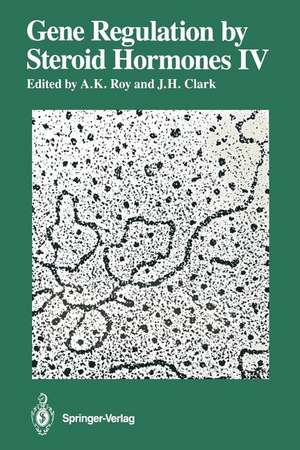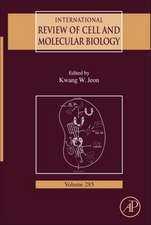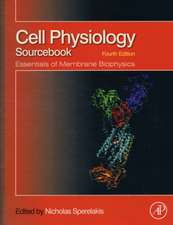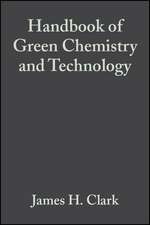Gene Regulation by Steroid Hormones IV
Editat de Arun K. Roy, James H. Clarken Limba Engleză Paperback – 5 oct 2011
Preț: 942.63 lei
Preț vechi: 1149.54 lei
-18% Nou
Puncte Express: 1414
Preț estimativ în valută:
180.40€ • 187.64$ • 148.93£
180.40€ • 187.64$ • 148.93£
Carte tipărită la comandă
Livrare economică 15-29 aprilie
Preluare comenzi: 021 569.72.76
Specificații
ISBN-13: 9781461281979
ISBN-10: 1461281970
Pagini: 256
Ilustrații: XI, 239 p.
Dimensiuni: 155 x 235 x 13 mm
Greutate: 0.36 kg
Ediția:Softcover reprint of the original 1st ed. 1989
Editura: Springer
Colecția Springer
Locul publicării:New York, NY, United States
ISBN-10: 1461281970
Pagini: 256
Ilustrații: XI, 239 p.
Dimensiuni: 155 x 235 x 13 mm
Greutate: 0.36 kg
Ediția:Softcover reprint of the original 1st ed. 1989
Editura: Springer
Colecția Springer
Locul publicării:New York, NY, United States
Public țintă
ResearchDescriere
The first Meadowbrook Symposium was held in 1978 and during the intervening ten years our knowledge concerning how steroid hormones function at the level of gene expression has advanced by leaps and bounds. In this volume, which sum marizes our fourth meeting, these advances are very evident. What seemed like science fiction ten years ago has become commonplace science. Who would have imagined that we could synthesize a nucleotide sequence that binds a specific steroid receptor and acts as a controlling element for gene expression? No one; but as is evident from the results reported in several chapters, this technique is yielding a wealth of information. Using these and other techniques it has become apparent that gene transcription is controlled by interactions between transacting factors and DNA recognition sequences (response elements). These transacting factors appear to be members of a large gene family that includes steroid hormone receptors, transcription factors, protooncogenes and homeobox proteins. Thus a great deal has been learned, but as usual, questions remain. Many of these questions are posed by the findings and observations found in several chapters in this volume. Non hormone binding forms of steroid receptors and their relevance to receptor down regulation, recycling and biological response remain a mystery. The quantitative relationship between receptor binding and biological response still presents agonizing problems. These and many other intriguing questions are discussed in this volume and set the stage for what should be a most rewarding time in endocrinology. Winter 1989 ARUN K.
Cuprins
1. Towards a Molecular Understanding of Steroid Binding to Glucocorticoid Receptors.- 2. Regulation of Glucocorticoid Receptor Protein and Gene Expression by Glucocorticoids.- 3. Modulation of Glucocorticoid-Induced Responses by Cyclic AMP in Lymphoid Cell Lines.- 4. Differential Regulation of Tyrosine Amino-Transferase by Glucocorticoids: Transcriptional and Post-transcriptional Control.- 5. Steroid Response Elements. Definition of a Minimal Promoter and Interaction with Other Activating Sequences.- 6. GHF-1, A Tissue-Specific Transcription Factor, Is a Homeobox Protein.- 7. Regulation of EGF Receptors and Nuclear Protoncogenes by Estrogen.- 8. Regulation of the Rat Insulin II Gene: cis- and trans-acting Factors.- 9. Thyroid Hormone Regulation of Rat Liver S14 Gene Expression.- 10. Hormonal and Developmental Regulation of Xenopus Egg Protein Genes.- 11. Inhibition of the Intracellular Transformation of Rat Ventral Prostate Androgen Receptor by 3?-Deoxyadenosine.- 12. Androgen Action in Rat Liver: Changes in Androgen Sensitivity During Maturation and Aging.- 13. Inhibition of Cell Proliferation by a Nuclear Type II Ligand: Methyl P-Hydroxyphenylactate.- 14. Promoter Specific Activating Domains of the Chicken Progesterone Receptor.











